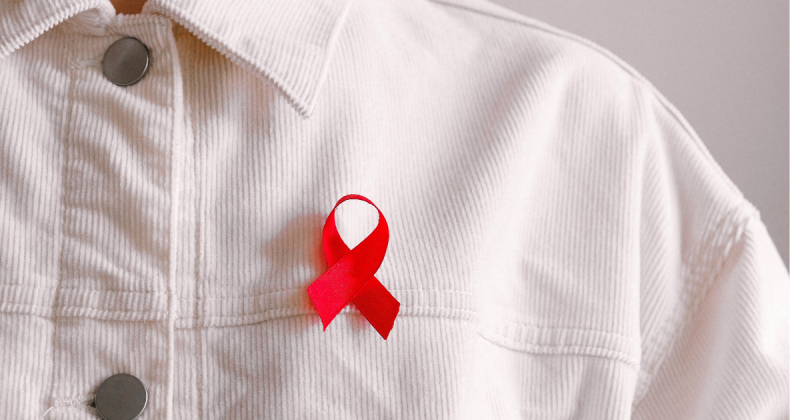
A new report released this Thursday (13) by the Joint United Nations Program on HIV/AIDS (UNAIDS) shows that an end to the AIDS pandemic by 2030 is quite possible. Entitled “The Path to Ending AIDS,” the document points out a path to end the disease that “also helps the world be better prepared for future pandemics.”
 A new report describes the path to the goal – Photo: Pexels / Reproduction / ND
A new report describes the path to the goal – Photo: Pexels / Reproduction / NDThe document emphasizes that this achievement depends on the political and financial choices of countries and their leaders. In addition, it provides data and case studies on the current global situation and ways to end the AIDS epidemic by 2030 as part of the ODS (Sustainable Development Goals).
Watch the video:
UNAIDS is committed to inspiring the world towards a shared vision of zero new HIV infections, zero discrimination and zero AIDS-related deaths. The program works in collaboration with global and national partners to fight the disease.
Leadership
“The end of AIDS is an opportunity for today’s leaders to leave an extremely powerful legacy for the future,” says UNAIDS Executive Director Winnie Byanyima.
“These leaders may be remembered by future generations as the ones who put an end to the world’s deadliest pandemic. They can save millions of lives and protect the health of all people,” he adds.
The report highlights that the HIV response is successful when it is based on strong political leadership and actions such as respect for science, data and evidence; eliminate inequalities that impede progress in the response to HIV and other pandemics; strengthening communities and civil society organizations in their vital role in the response; and ensure sufficient and sustainable funding.
Investing in the fight against AIDS
The UNAIDS report also shows that progress in the fight against AIDS has been greater in countries and regions with greater financial investment.
For example, in eastern and southern Africa, new HIV infections have fallen by 57% since 2010, and the number of people on antiretroviral treatment has tripled, from 7.7 million in 2010 to 29.8 million in 2022.
Thanks to support and investment in fighting AIDS in children, 82% of pregnant and lactating women living with HIV globally gained access to antiretroviral treatment in 2022, up from 46% in 2010, resulting in a 58% reduction since 2010 to 2022, the lowest since the 1980s.
legal milestones
According to the report, accelerating progress in the response to HIV requires ensuring that legal and policy frameworks do not violate human rights, but protect them.
Several countries repealed harmful laws in 2022 and 2023, including Antigua and Barbuda, the Cook Islands, Barbados, St. Kitts and Nevis, and Singapore, which criminalized same-sex sex.
Financing
HIV funding also declined in 2022 from both international and domestic sources, returning to the same level as in 2013. Resources totaled $20.8 billion in 2022, far short of the $29.3 billion needed by 2025, the document says.
However, the report shows that there is now an opportunity to end AIDS as political will is stimulated by investment in a sustainable response to HIV.
These resources should be focused on what matters most to strengthen UNAIDS: integrating health systems, non-discriminatory laws, gender equality and strengthening community care and support networks.
“The facts and figures in this report do not show that the world is already on the right track, but they clearly indicate that we can get there. The way forward is clear,” says UNAIDS Executive Director Winnie Byanyima.
Target: 95-95-95
Countries such as Botswana, Eswatini, Rwanda, the United Republic of Tanzania and Zimbabwe have already met the 95-95-95 targets.
This means that in these countries, 95% of people living with HIV know their serostatus; 95% of people who know they are infected with HIV receive life-saving antiretroviral treatment; and 95% of people receiving treatment are virally suppressed.
Another 16 countries, eight of which are in sub-Saharan Africa, the region that accounts for 65% of all people living with HIV, are also close to achieving these goals.
Brazil: 88-83-95
Brazil, in turn, is also on track for its 88-83-95 targets. But the country continues to face barriers, mostly driven by inequalities that prevent vulnerable people and groups from gaining full access to vital HIV prevention and treatment resources.
According to Ariadna Ribeiro Ferreira, Equality and Rights Officer at Unaids Brazil, a movement in municipal and state legislatures, as well as in Congress to introduce criminal and punitive laws that directly affect the LGBTQIA+ community, especially transgender people, could increase stigma.
“This movement exacerbates inequalities by increasing stigma and discrimination against certain populations, and could help keep Brazil from reaching its 2030 AIDS goals,” he says.
*According to Agência Brasil.
Source: Ndmais